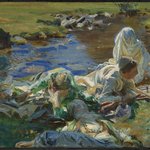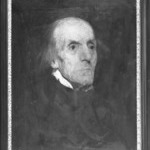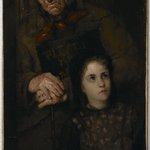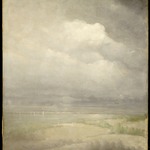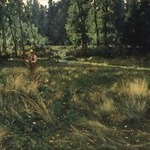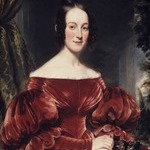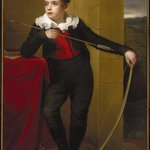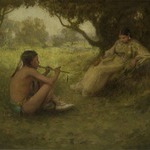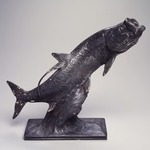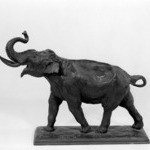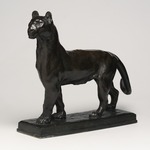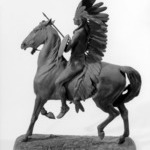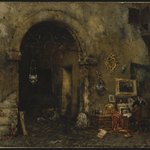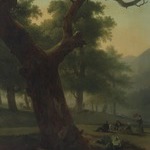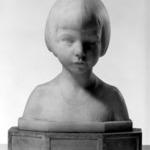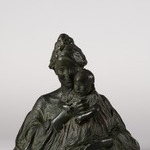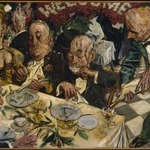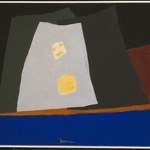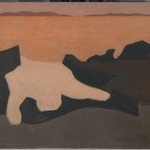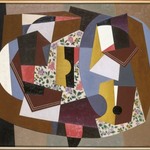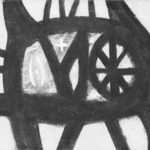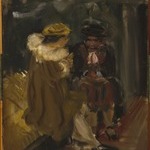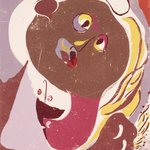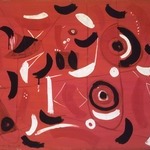
This image is presented as a "thumbnail" because it is protected by copyright. The Brooklyn Museum respects the rights of artists who retain the copyright to their work.
Premonition of Evil
Adolph Gottlieb
Contemporary Art
Adolph Gottlieb was an Abstract Expressionist painter whose subjects and forms were derived from sources including African and Native American art. His series of Pictographs (1941–51) related to the beliefs and myths of these cultures, from which he created a unique visual language. Premonition of Evil, painted just after the end of World War II, depicts fragments of the human body in divided areas of the composition. Searching eyes stare out at the viewer through the windows in Gottlieb's informal grid.
MEDIUM
Oil and tempera on canvas
DATES
1946
DIMENSIONS
unframed: 40 1/8 x 36 1/8 in. (101.9 x 91.8 cm);
framed: 40 3/4 x 36 3/4 in. (103.5 x 93.3 cm) (show scale)
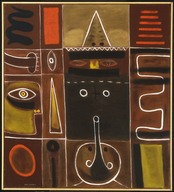


SIGNATURE
Signed lower left: "Adolph Gottlieb"
COLLECTIONS
Contemporary Art
ACCESSION NUMBER
1990.163
CREDIT LINE
Gift of the Adolph and Esther Gottlieb Foundation, Inc. in honor of Esther Gottlieb and Lawrence Alloway
MUSEUM LOCATION
This item is not on view
CAPTION
Adolph Gottlieb (American, 1903–1974). Premonition of Evil, 1946. Oil and tempera on canvas, unframed: 40 1/8 x 36 1/8 in. (101.9 x 91.8 cm);. Brooklyn Museum, Gift of the Adolph and Esther Gottlieb Foundation, Inc. in honor of Esther Gottlieb and Lawrence Alloway, 1990.163. © artist or artist's estate (Photo: Brooklyn Museum, 1990.163_SL1.jpg)
IMAGE
overall, 1990.163_SL1.jpg. Brooklyn Museum photograph
"CUR" at the beginning of an image file name means that the image was created by a curatorial staff member. These study images may be digital point-and-shoot photographs, when we don\'t yet have high-quality studio photography, or they may be scans of older negatives, slides, or photographic prints, providing historical documentation of the object.
RIGHTS STATEMENT
© artist or artist's estate
Copyright for this work may be controlled by the artist, the artist's estate, or other rights holders. A more detailed analysis of its rights history may, however, place it in the public domain.
The Museum does not warrant that the use of this work will not infringe on the rights of third parties. It is your responsibility to determine and satisfy copyright or other use restrictions before copying, transmitting, or making other use of protected items beyond that allowed by "fair use," as such term is understood under the United States Copyright Act.
For further information about copyright, we recommend resources at the United States Library of Congress, Cornell University, Copyright and Cultural Institutions: Guidelines for U.S. Libraries, Archives, and Museums, and Copyright Watch.
For more information about the Museum's rights project, including how rights types are assigned, please see our blog posts on copyright.
If you have any information regarding this work and rights to it, please contact copyright@brooklynmuseum.org.
RECORD COMPLETENESS
Not every record you will find here is complete. More information is available for some works than for others, and some entries have been updated more recently. Records are frequently reviewed and revised, and we welcome any additional information you might have.

